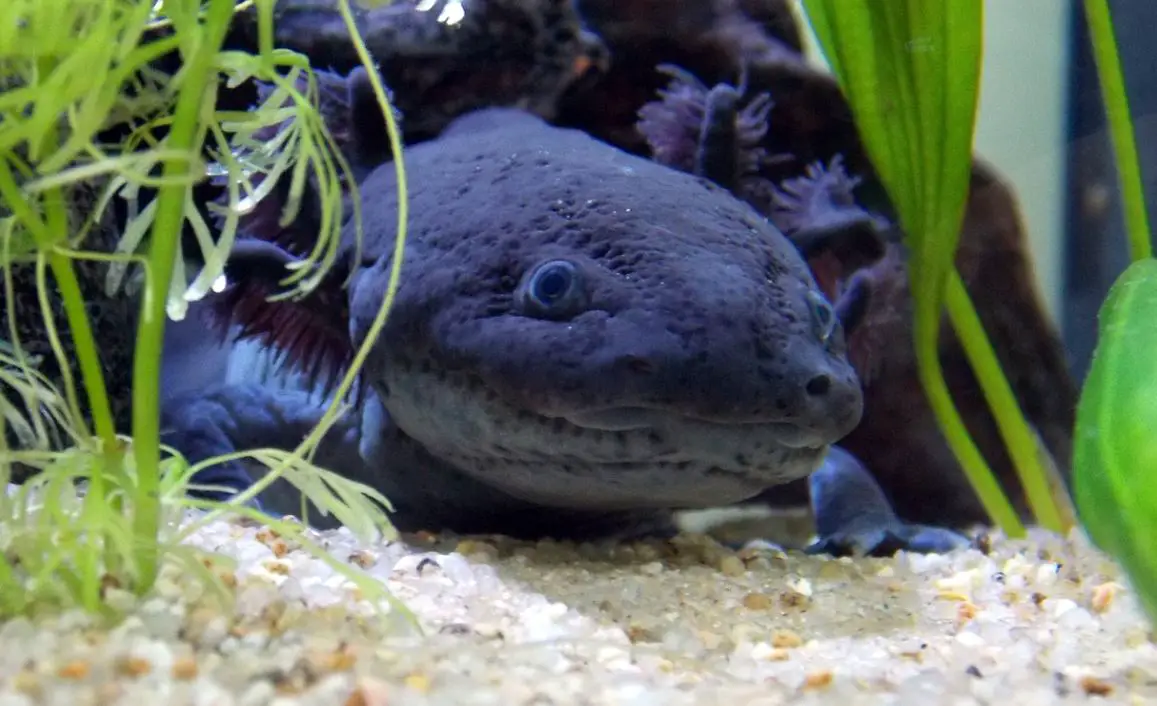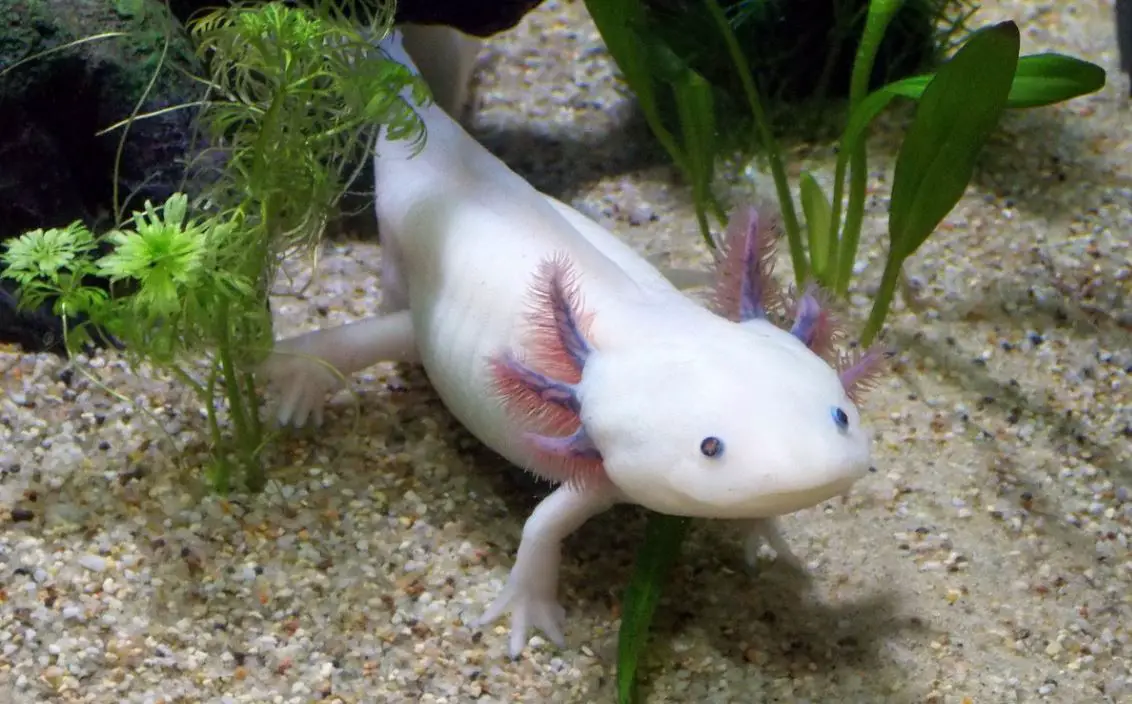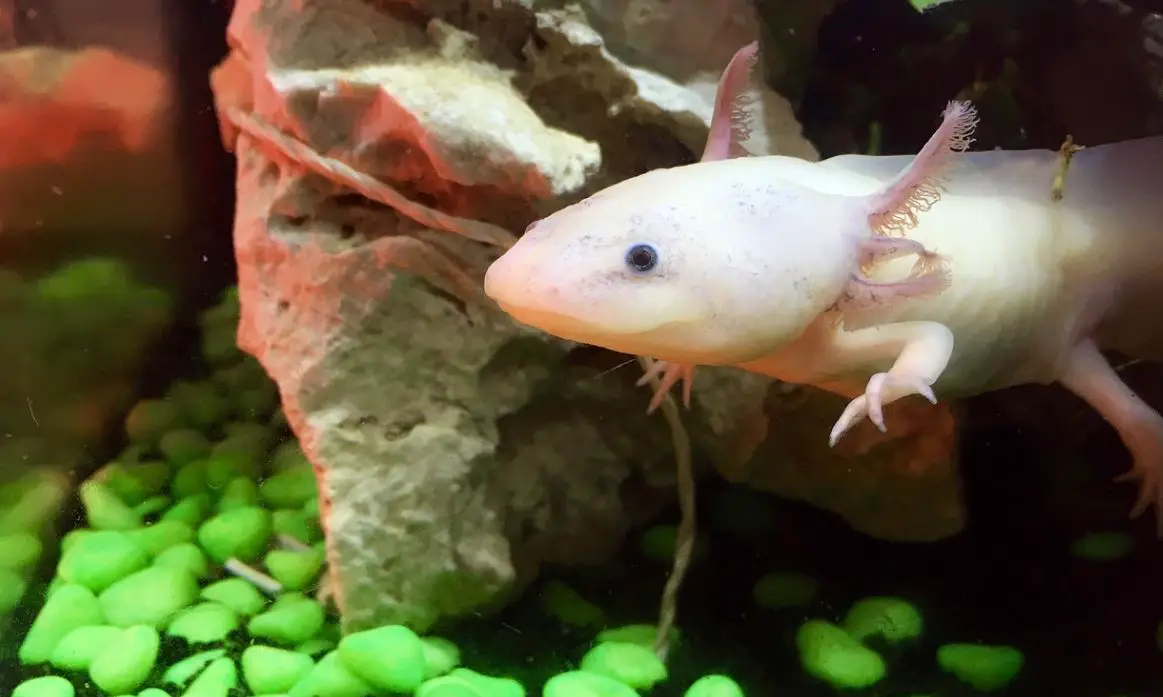Do Axolotls Need A Heater – Must Read Owners Guide

Axolotls are incredibly interesting creatures that are found in the wild in Mexico. Their faces remain in the juvenile form making them ‘neotenic’ and their distinctive smile and peculiar looks make them a desirable pet all across the United States.
Axolotls are an endangered species and they have been revered in Mexico all the way back to the ancient Aztecs who gave them the name of ‘the walking fish’.
Axolotls generally do not need hot water and their ideal temperatures will be between 15 and 19 degrees celsius. Bearing this in mind, axolotls don’t need a heater most of the time but they may actually require a chiller if you live in a hot climate and the water gets a bit too hot.
Another thing to ensure is that you don’t leave the tank in a position where it’s going to be affected by direct sunlight which can bring the temperature above the recommended levels resulting in serious stress for the axolotl, disease and even death.
You don’t want the water to fall below or above these levels as it may result in the death of your axolotl and another thing that’s even more important is the quality of the water and the overall environment that you provide for your pet.
You need a filter and a water testing kit
Axolotls need brackish water which is a mix between fresh and saltwater. This is one of the main reasons why axolotls are not recommended for beginners.
You can get a formula at your local pet store for making the water the right mixture of fresh and salt and you really need to get a filter to ensure that the water is clean and ready for your Axolotl.
The first thing you need to do once you get your axolotl tank is to give it a good clean down to remove any bacteria and then you need to fill it up with water, add ammonia, get it to the right temperature and start cycling the water.
This we result in good bacteria growing and we can then start adding in in our live plants, decorations and eventually the axolotls.
Check out a video on cycling the water here:
Low quality water is the cause of most aquatic illness for aquatic pet owners. Axolotls require a ph level of between 7.4 and 7.6 which is ideal and live plants can help to maintain these perfect pH levels.
Regular cycling of the water is also crucial to your axolotls long-term health and you should be looking to change the water every two months at least.
An air pump is also very handy to have in your tank, it will keep the water oxygenated so your axolotl won’t have to go to the top for air as they do have gills for taking in oxygen on the side of their head.
The substrate

It’s very important not have substrate that too little, anything under 3 cm is likely to end up in your axolotls mouth. Axolotls mouths produce a suction that will suck anything in their range into their mouth for digestion.
Anything under 3 cm is likely to end up in their stomach so large rocks are the most ideal substrate and this will also give them places to hide as well which they would like.
A 10 gallon tank will be just enough for one axolotl but if you to want to keep two, you will need a 15 or 20 gallon tank. It might be best to separate them within the tank through natural obstacles, if one axolotl is bigger than the other they may start the nip on their gills and axolotls are also known for cannibalism especially in their youth.
Axolotls are carnivores
Axolotls are top of the food chain in their native environment in Mexico and they will suck up any fish or worms that float their way. They don’t chew their food but swallow it whole and digest it. Taking in a little bit of the substrate will help to digest the food in your stomach too.
Their favourite foods include live worms, blood worms, earthworms, shrimp Brine, salmon pellets, shrimp pellets, ghost shrimp, cherry shrimp, prawn meat, and they can even eat chicken and beef.
Can I take my axolotl out and touch it

It is probably best not to take your axolotl out of the tank and if you do, use a protective wire mesh. They have very sensitive skin and handling them can lead to tears and infection.
Can my axolotl live with goldfish
It’s best advised not to keep axolotl with goldfish as the bigger one might start in nip on the other. A goldfish especially might nip on the gills of the axolotl and the same will be true if the axolotl is bigger than the goldfish. It’s best to keep axolotls in a tank on their own or with a couple of snails as a maximum or else best to keep them in a species only tank.
Do axolotls need land
Axolotls definitely do not need land, they cannot live out of water, they cannot walk across land and they should be left in the water at all times to avoid serious health issues.
Conclusion
With the proper conditions, handling and nutrition axolotls can live long lives of 10 to 15 years so getting one is not a short-term commitment. You should be ready to take care of this pet for the long term. They do make good pets once you get the water conditions and the temperature right and while it’s not easy, it’s not exactly impossible either so don’t be afraid to give it a try.


